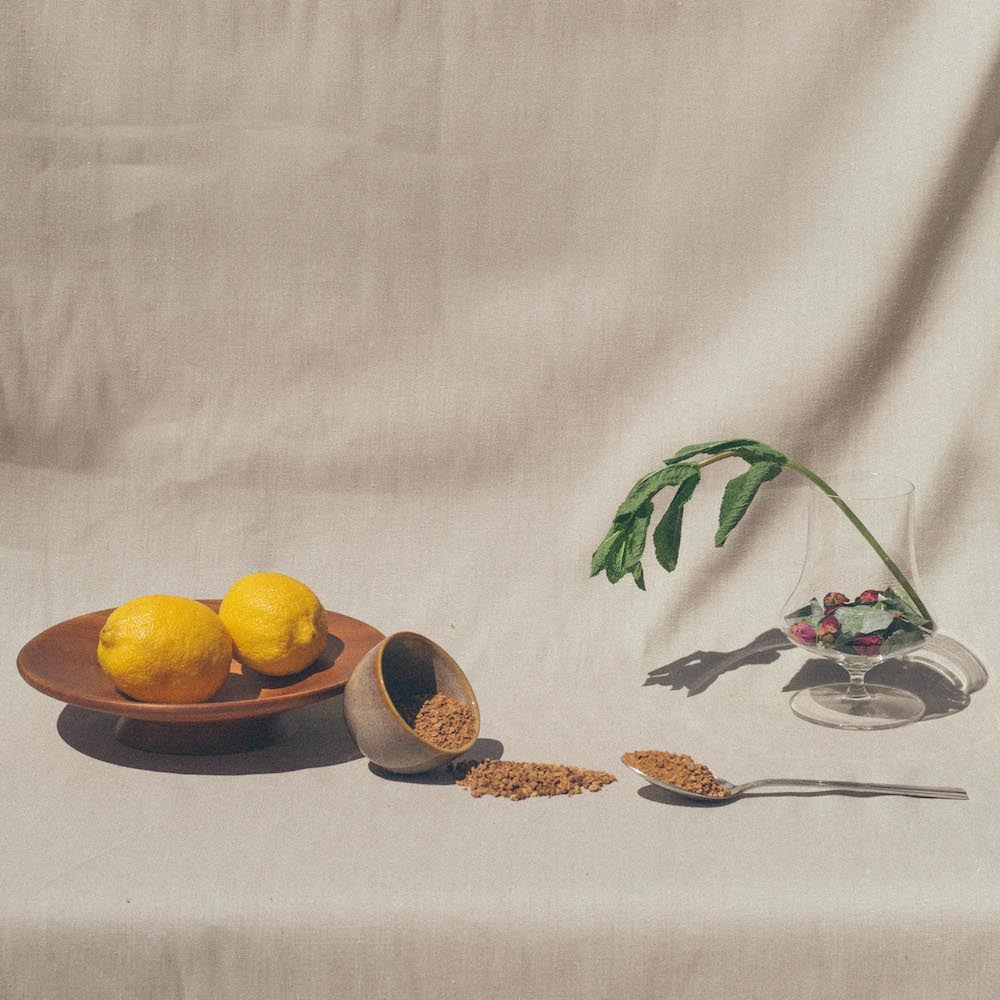Remedy in Practice: A Still Life
/By Soko Fong Negash
When I think of what health and healing look like for me at home, I am reminded of the remedies, practices and elixirs passed down from my elders. Whether I was suffering from a common cold, a bruise or a stomach ache, there was always some form of relief or comfort offered to me. Depending on the ailment, it might be congee (Chinese rice porridge) waiting in the rice cooker; ghee (clarified butter popular in East African cuisine and beyond) wrapped in a towel, then placed on my head to detoxify my body; or another from a long list of homemade concoctions.
More often than not, it is knowledge carried from generations I have never had the honour of meeting. Frequently, the validity of these practices is questioned by folks who have not lived them. But, in reaction to my own deeply troubling experiences within the Canadian “health-care system”—including my pain being neglected, as well as my health issues being misdiagnosed and overmedicated—I find myself reaching, again and again, for the wisdom and cure-alls of my predecessors, not to mention trusting my gut.
For centuries, community-focused care and ancestral healing knowledge have existed as practices of resistance and freedom for folks of colour. So, I wondered: What are the specific practices that keep us feeling protected and well? What happens when we regard these traditions as the art they deserve to be?
I turned to five women of colour in my circle and asked about the home treatments and cures that, in one way or another, feel comforting to them. These photographs are my interpretation of their words.
Soko Fong Negash is a Toronto-based visual artist. She’s a Cancerian (read: has a lot of feelings), likes making things with her hands, and plays between realms of documentary film, photography, audio, and material art. You can connect with her here or here.
“Tiger balm or white flower oil, which are derivatives of the same type of Chinese herbal home remedy, are made from a selection of oils including eucalyptus oil and menthol. Tiger balm is made as a solid version of the product whereas white flower oil comes in a liquid. It is meant for all-purpose use to cure pains like headaches, stomach issues and muscle aches. You can usually buy these products over the counter from a Chinese herbalist or at an Eastern medicinal apothecary.
A little goes a long way. The product has a quick, intense cooling effect once you've rubbed it on your skin–but you should be careful never to apply it near your eyes.
My earliest memories are of my mother using white flower oil to cure stomach aches that I would get frequently as a child.”
—Ariel Yang
“This home remedy is for a nasty cold—especially helpful at the very beginning, when you feel that familiar tickle in your throat.
This is a bedtime ting. First, cut some thick onion slices and leave them in your room along with some warm clothes. Next, brew a large mug of black coffee and squeeze half a lime into it. Take your coffee into the bathroom with you and drink slowly while taking a hot shower. I like to leave some behind to sip while I get ready for bed. After the shower, moisturize and bundle up in warm clothes. Slip the onion slices into your socks, making sure they lay flat under your feet. You can also put half the onion under your bed if you’re extra like me. Do this all as quickly as possible and get under your blankets. Take a deep breath and go to sleep.
This ritual comes from my Jamaican grandmother, one of the many pieces of wisdom she's passed on. Her instructions are very strict–black coffee only, hot, hot shower and move quickly. This was her go-to after emigrating to Canada. I will always hear how because of this she never missed a day of work. True yawd woman.”
— Orisha Burns
“This is a remedy that draws from reflexology practices. It is meant to ease persistent body aches or pains, thought to be caused by a caught draft of cold wind or some other external disturbance. The heat draws out whatever the ailment is; in my Torontonian home, it was done through a heated blanket or towel. In Ethiopia, where I'm from, the heat is sourced from coals. The heat is then trapped around the body with a wrapped blanket or gabi, meant to protect you from any new cold air threatening to undo the heat's effects.
This practice is one that I didn't truly appreciate until I was 19 and in Ethiopia for the first time as an adult, with my mother. While I was there, I fell ill and tried every remedy possible: over-the-counter medicine, holistic cultural practices, everything in between. I was the recipient of this remedy during that time, and it was only then that I realized the love and tradition that goes into seemingly ordinary practices like this.
Though it was not the thing to heal me then, it did in other ways.”
— Amani Bin Shikhan
“Widely used in the Pakistani community, joshanda is a mix of medicinal herbs that comes in a powder form, used to combat colds and flu. One way that we prepare it is by steeping joshanda, ginger and cloves until the colour comes out strong. My own family’s way of making it is to add honey and lemon to it as well.
I always hated drinking it as a child due to the really strong licorice-style flavour. Every time I got sick, the vivid smell of joshanda would be the first thing I would think of because I hated it so much. But the tea became super-comforting as I grew older, and now it's the first thing I drink when I get sick.”
— Sana Malik
“I do this before bed to kill a cold, especially if I am coughing a lot. Basically, you mix turmeric and honey together and then swallow a big spoonful of it to cleanse your system of harmful bacteria and to reduce coughing. You then put a towel over your head and put your face over a boiling pot of salt water, making sure your face is pretty close to the steam so that you are breathing in the heat. After about five minutes, you wrap your face in a towel and go to bed.
I usually feel its effects pretty immediately because my body starts to decongest during the steaming. It reminds me of being taken care of because my mom would always use it to soothe me when I have been sick. Afterwards, I feel an overwhelming sense of calmness.”
— Albetel Abera













